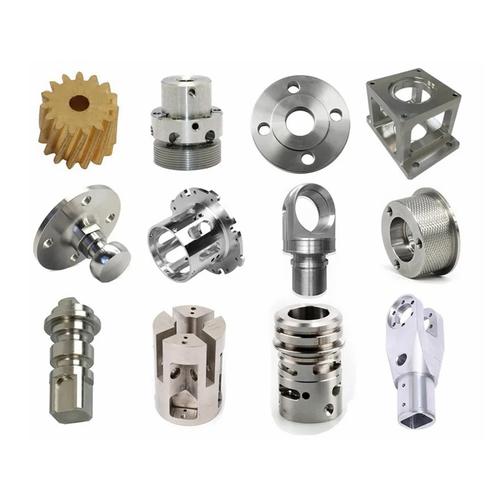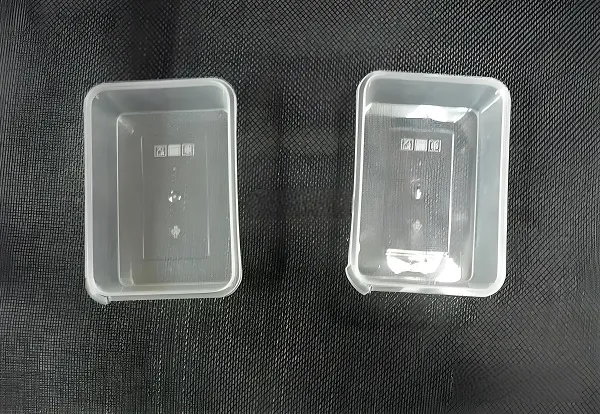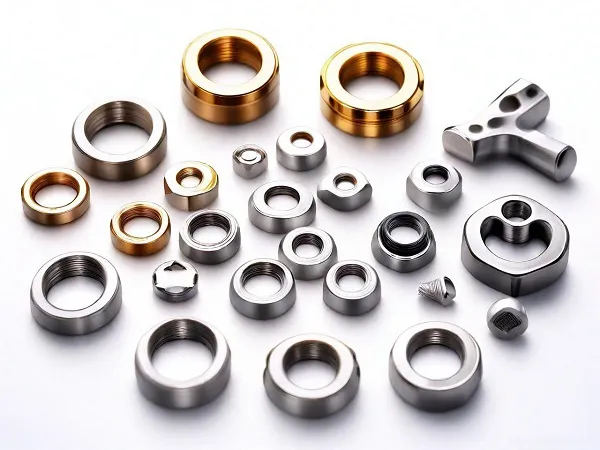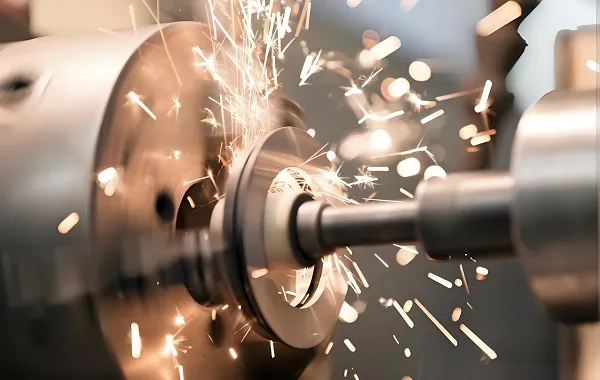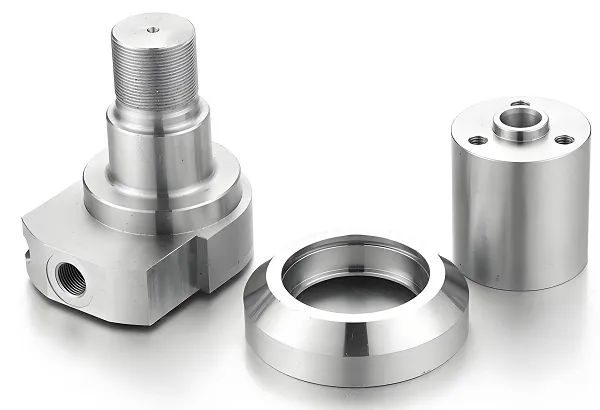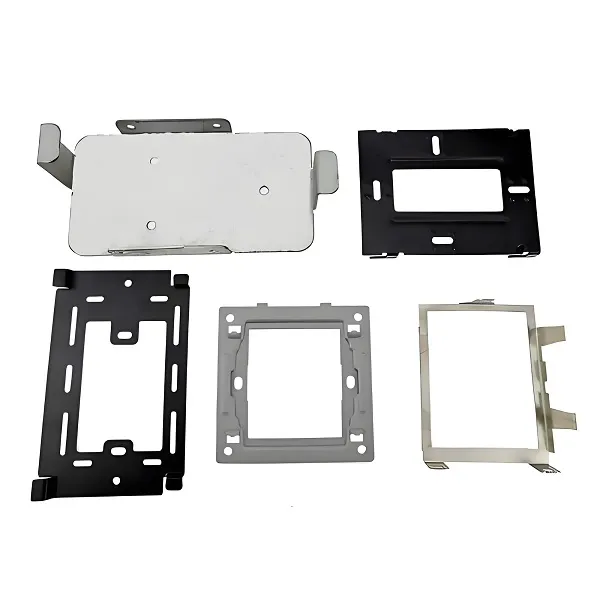Titanium alloy, a star material known as the “space metal”, has become the core choice for aerospace, medical implants, and high – end equipment due to its excellent strength – to – weight ratio, corrosion resistance, and biocompatibility. However, its low thermal conductivity (only 7 W/m·K), high chemical activity, and high toughness also pose challenges to traditional CNC machining, such as severe tool wear and low processing efficiency. This article will deeply analyze the key technological breakthroughs in CNC machining of titanium alloys, and reveal how modern manufacturing tames this “difficult – to – machine material” through data and cases.
I. Material Characteristics and Processing Challenges: The “Double – edged Sword” Nature of Titanium Alloys
-
Thermal Management Dilemma: During cutting, 80% of the heat accumulates at the tool tip, with the local temperature exceeding 800°C, accelerating tool diffusion wear.
-
Risk of Elastic Deformation: The low elastic modulus (110 GPa) makes thin – walled parts prone to tool deflection during processing, and it is difficult to control dimensional accuracy (typical tolerance requirement is ±0.02 mm).
-
Tool – sticking Effect: At high temperatures, titanium chemically bonds with the tool coating, shortening the tool life (the average life of carbide inserts is only 1/3 of that in steel processing).
Industry Pain Points: In the processing of titanium alloy helicopter hubs in an aerospace factory, due to low cutting efficiency, the processing time per piece exceeds 40 hours, and the tool cost accounts for 25%.
II. Tool and Parameter Optimization: Scientific Matching to Unleash Efficiency Potential
1. The Golden Rules of Tool Selection
-
Substrate and Coating:
-
Give priority to ultra – fine – grained carbide (such as K series) or PCD tools, with edge strengthening treatment;
-
The coating must be AlTiN/TiAlN (heat resistance > 900°C) to reduce thermal diffusion.
-
-
Geometric Design:
-
The rake angle γ = 6°–10° enhances the edge strength, and the tool – tip arc radius R0.4–R0.8 balances surface finish and stress concentration.
-
2. Precise Matching of Cutting Parameters
| Process | Linear Speed Vc (m/min) | Feed per Tooth fz (mm/z) | Cutting Depth ap (mm) | Cooling Method |
|---|---|---|---|---|
| Roughing | 40–60 | 0.08–0.12 | 1.5–3.0 | High – pressure internal cooling (> 70 bar) |
| Finishing | 80–120 | 0.03–0.06 | 0.1–0.3 | Mist cooling + nitrogen environment |
| Note: Typical parameters for TC4 titanium alloy. The spindle power should reserve a 30% margin to prevent overload |
III. Vibration and Thermal Deformation Control: An AI – Driven Process Revolution
1. Adaptive Feed Control (AFC)
-
Monitor the spindle load in real – time and dynamically adjust the feed rate: increase the speed by 20% when the load is < 70%, and reduce the speed for protection when it is > 90%.
-
Siemens Case: Applying AFC in the machining of aerospace hubs, the roughing efficiency is increased by 22%, and the tool chipping rate is reduced by 45%.
2. Vibration Suppression Technology
-
ACC (Active Chatter Control): Modulate the spindle speed to avoid the resonance frequency, increasing the milling stability by 30% and allowing a 25% increase in cutting depth.
-
Trochoidal Milling: Spiral penetration reduces full – edge cutting. The processing efficiency of deep grooves in titanium alloys is increased by 35%, and the tool life is extended by 50%.
IV. Residual Stress Management: The Key to Ensuring Fatigue Life
-
Tensile Clamping Process: High – speed milling of TC4 under a pre – tensile stress of 327 MPa increases the fatigue life by 8 – 16% .
-
Mechanism: Pre – tensioning offsets the processing tensile stress, forming a surface compressive stress layer (-200 MPa to -350 MPa), delaying crack initiation .
-
Micron – level Compensation Strategy: Predict the deformation amount based on finite – element simulation, and preset the reverse compensation value in the CAM stage (typical compensation is 0.05 – 0.15 mm) .
V. Integration with Additive Manufacturing: An Innovative Solution for Complex Structures
Laser Powder Bed Fusion (LPBF) 3D printing realizes the forming of complex internal flow channels in titanium alloys, followed by CNC finishing:
-
Hybrid Manufacturing Case: Beta – C titanium alloy after LPBF + 480°C aging treatment has a strength of 1611 MPa (the highest strength of 3D – printed metals globally), and CNC finishing milling ensures that the Ra of the assembly surface is < 0.8 μm .
-
Efficiency Comparison: Traditional forging of titanium alloy brackets requires 5 processes, while hybrid manufacturing reduces it to 2 steps, shortening the cycle by 60% .
Customize Your Precision Titanium Alloy Part Solution
When you face the needs of aerospace – grade thin – walled frames, medical implants, or super – functional parts, the ultimate performance of titanium alloys requires ultimate process control. We rely on the following core capabilities to provide end – to – end manufacturing support:
-
Intelligent Machining Centers: Equipped with the Siemens adaptive control system + a 12,000 RPM high – pressure internal – cooling spindle to achieve dynamic optimized cutting of titanium alloys;
-
Hybrid Manufacturing Production Lines: LPBF 3D printing + five – axis precision milling to unlock topologically optimized structures;
-
Full – process Stress Control: Pre – tensioning fixtures + micro – shot peening post – treatment to ensure that the fatigue life meets the standard.
Are you facing these challenges?
-
Excessive deformation of thin – walled titanium parts during processing?
-
Severe tool vibration in deep – cavity/irregular structures?
-
Quick delivery of small – batch and multi – variety orders?
Submit your drawings now to get a customized process solution! It includes:
-
Cutting parameter simulation report;
-
Tool and fixture configuration suggestions;
-
Step – by – step quotation (including surface treatment options).
👉 [Click for Online Consultation] or call +86-18150097490, and let the titanium alloy expert team customize a “zero – defect” production path for you.
At the limit of metals, we use data as a blade and algorithms as a ruler – taming the wildness of titanium into the essence of industry.
—— Precision Manufacturing Division

